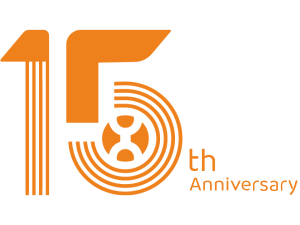Our Technology
APsystems offers advanced, powerful solar microinverter technology for residential and commercial systems. The APsystems solar solution combines highly efficient power inversion with a user-friendly monitoring interface to bring you reliable, intelligent energy. Our proprietary system architecture increases solar harvest and ensures maximum output for solar arrays, and we continue to develop new technologies and products for the marketplace.
Search
News
 The Future of Solar & Storage: How APsystems Is Using AI to Build a Smarter Energy EcosystemAugust 14, 2025 - 7:39 pm
The Future of Solar & Storage: How APsystems Is Using AI to Build a Smarter Energy EcosystemAugust 14, 2025 - 7:39 pm Discover the Future of Solar with APsystems at Solar & Storage Live 2025!July 22, 2025 - 2:22 pm
Discover the Future of Solar with APsystems at Solar & Storage Live 2025!July 22, 2025 - 2:22 pm AI Navigates the Future of Solar & Energy Storage: APsystems Builds a Diverse Smart Energy EcosystemJune 8, 2025 - 11:57 pm
AI Navigates the Future of Solar & Energy Storage: APsystems Builds a Diverse Smart Energy EcosystemJune 8, 2025 - 11:57 pm Visit Us at Intersolar Europe 2025!April 11, 2025 - 6:23 am
Visit Us at Intersolar Europe 2025!April 11, 2025 - 6:23 am INSTALLERS ! BOOST YOUR SALES WITH APSTORAGE EXCLUSIVE OFFER !April 10, 2025 - 2:37 pm
INSTALLERS ! BOOST YOUR SALES WITH APSTORAGE EXCLUSIVE OFFER !April 10, 2025 - 2:37 pm
Contact Details
At APsystems, we are committed to providing the highest quality service to our customers and partners around the world.
Phone: +31-85-3018499 or +33-481 65 60 40
Email:emea@APsystems.com


APsystems QS1 Microinverter NOW SHIPPING
/in General News/by APsystemsA bold step forward in microinverter technology, the QS1 offers 300% faster installation time, while offering the highest peak output power and up to 3X faster data transmission speed than PLC. A wider MPPT voltage range will result in a greater energy harvest for homeowners.
The first of its kind, the QS1 is designed to accommodate today’s high output PV panels up to 375W, offering 300W AC output per channel, highest in the microinverter segment. The unit significantly reduces installation time and costs, taking the place of four conventional microinverters per each QS1 installed while providing independent MPPT for each module.
The QS1 shares common AC trunk cabling with APsystems’popular dual-module YC600 microinverter, offering flexible mix-and-match compatibility on the same circuit to enhance site design capability and maximize circuit capacity. Both microinverters utilize the same gateways; installers can choose from the ECU-R, for single or multi-residential installations, or the ECU-C, for applications requiring consumption monitoring and advanced contact/relay features.
QS1 features include:
Contact your local distributor or sales.emea@APsystems.com to bring the QS1 to your customers today.
Come and meet the APsystems team on stand 6L29 at the Bepositive show in Lyon, 13th-15th February 2019
/in Events, General News/by Max BoironHeld every 2 years and bringing together over 550 exhibitors and 30000 professional visitors working in renewable energies, sustainable buildings and technologies, Bepositive has become a real meeting place for exchanges between solar installers, manufacturers, specifiers and more.
With offices based in Rotterdam, Netherlands since 2015 and Lyon, France since 2016, the entire European APsystems team will be delighted to welcome you to stand 6L29 where we will present the full range of multi-module micro-inverters perfectly suited to residential and commercial solar.
Come and discover the new DUO YC600 and QUAD QS1 micro-inverters, two single-phase micro-inverters, with independant MPPT per module and using the same cables and accessories for higher flexibility and faster installation.
The QS1 has been shortlisted to participate in the BePOSITIVE Award competition, which will take place on February 13 at 5 pm
QS1 technology builds on APsystems’ successful multi-module microinverter family, offering lower logistics costs, integrated ZigBee communication and connection capabilities, and a wider MPPT voltage range for greater energy harvest in low light conditions.
Founded in 2009 in Silicon Valley in the United States, APsystems has grown to become the world’s number 2 in the solar inverter microinverter segment. Offering a wide range of micro-inverter solutions ideal for residential and large roofs, APsystems continues to be a leader in photovoltaic innovation worldwide. Certified ISO9001 and ISO 14001 and profitable since 2012, APsystems offers guaranteed products up to 20 years. APsystems serves through its network of partners, thousands of customers in over 80 countries worldwide.
Come & visit us to talk with our team and get the latest information on our product portfolio including new powerful innovations for 2019 at the BePOSITIVE show.
Date: 13th-15th February 2019
Booth# : 6L29
Venue : Eurexpo exhibition center, Lyon, France
APsystems Launches QS1 Four-Module 1200W AC Microinverter
/in Press Coverage/by APsystems**FOR IMMEDIATE RELEASE**
ANAHEIM, USA – September 24th, 2018 – APsystems unveils the QS1, a four-module, single phase microinverter for residential applications at the Solar Power International trade show in Anaheim, USA. A new design for APsystems, the QS1 offers 75% faster installation time, while offering the highest peak output power and up to 3X faster data transmission speed than PLC. A wider MPPT voltage range will result in a greater energy harvest for homeowners.
The first of its kind, the QS1 is designed to accommodate today’s high output PV panels up to 375W, offering 300W AC output per channel, the highest among microinverters. The unit also significantly reduces installation time and costs, taking the place of four conventional microinverters per each QS1 installed while still providing four independent MPPT.
The QS1 utilizes a common AC trunk cabling with the dual-module YC600, offering flexible mix-and-match compatibility on the same circuit to enhance site design capability and maximize circuit capacity. Both microinverters also utilize the same gateways; installers can choose from the ECU-R, for single or multi-residential installations, or the ECU-C, for applications requiring consumption monitoring and advanced contact/relay features.
“Compatibility with the existing YC600 microinverter system gives the QS1 an unprecedented advantage,” said APsystems Chief Technology Officer Dr. Yuhao Luo. “Mixing dual and quad microinverters in the same system adds design flexibility while offering a strong inventory and installation labor advantage over conventional microinverters.”
Today’s solar systems require a more robust communication architecture to manage significantly more data points and in-field software updates. A 2.4GHz wireless Zigbee mesh network offers enhanced data transmissions speed, up to three times faster than conventional powerline communication (PLC).
The QS1 builds on the successful APsystems line of multi-module microinverters, offering reduced logistics costs, integrated communication and connection features, and a wider MPPT voltage range for greater energy harvest during low light conditions.
The new microinverter will be on display at the APsystems booth #2838 at Solar Power International, USA.
APsystems to Launch QS1 Four-Module 1200W Microinverter at Solar Power International, USA
/in Events, General News, Press Releases/by APsystemsFOR IMMEDIATE RELEASE
SEATTLE, Wa.; ROTTERDAM, Netherlands; JIAXING, China – August 27, 2018 – APsystems will unveil the QS1, a four-module, single phase microinverter for residential applications at the Solar Power International trade show in Anaheim, USA. A new design for APsystems, the QS1 offers 75% faster installation time, while offering the highest peak output power and up to 3X faster transmission speed than conventional microinverters. A wider MPPT voltage range will result in a greater energy harvest for homeowners.
The first of its kind, the QS1 is designed to accommodate today’s high output PV panels, offer enhanced capability and significantly reduce installation time and costs while providing an unprecedented level of power with four independent MPPT per channel. Common AC trunk cabling with the dual-module YC600, offers flexible mix-and-match compatibility on the same circuit and with the same gateway (ECU-R or ECU-C).
The unit also builds on the successful APsystems line of multi-module microinverters, offering reduced logistics costs and integrated communication and connection features.
The new microinverter will debut at the APsystems booth #2838 September 25-27 at SPI, USA.
The most competitive MLPE solution for social housing applications
/in General News/by Max BoironAPsystems at the JF4S 10th PV Briefing & EES Forum @ Intersolar Europe
/in General News/by Max BoironAPsystems will participate in the 10th ‘PV Briefing & Networking Forum Europe’ on Thursday, 21 June 2018 from 3.45PM am to 4 PM at Intersolar Europe in Munich, Hall A2 4 Booth A2 111 with the following track:
APsystems Smart-Grid Ready Microinverters Range Opens up New Opportunities for the Solar Industry in Germany, Maxime Boiron, Senior Director of Marketing EMEA, APsystems EMEA
In addition to a lively exchange of ideas and knowledge, the programme offers outstanding networking opportunities with more than 200 like-minded experts from the international solar and energy storage industry.
Olivier Jacques, President EMEA & USA – Global Executive VP, APsystems’ will be a featured speaker at the EES and Power2 Drive forum that will be held during Intersolar Europe on June 22, 3.40 PM Hall C1, booth C1.630 and organized by IBESA International Alliance. Mr Jacques will cover how Quality Management enables MLPE innovations to scale globally while driving sustainable profitability
For more information on the details , click here.
See the POST in German here
More power, smart-grid ready with new YC600 microinverter
/in General News/by Max BoironThe powerful new YC600 microinverter from APsystems is the forward-thinking choice in all solar markets. Seattle-area installer Puget Sound Solar chose the YC600 for a recent residential installation in the Magnolia neighborhood, where homeowners will benefit from the 300VA peak output to take maximum advantage of Washington state’s progressive net metering program. The 7.7kW system called for 22 modules arrayed over four distinct roof slopes on the multi-story home, using APsystems microinverters for design flexibility. Inherently smart-grid compliant with Reactive Power Control technology, the YC600 is designed and built for utility-interactive requirements today and into the future.
Installer: Puget Sound Solar
Location: Magnolia neighborhood, Seattle
Installation Date: 2018
System capacity (kw): 7.7kW
Microinverter: APsystems YC600
No. of Microinverters: 11
Number of modules: 22
Module brand/wattage: LG 350W, 60 cell
APsystems expands EMA system monitoring, supported languages & alert capabilities
/in General News/by Max BoironAPsystems EMA monitoring web portal now available in Portuguese
APsystems is proud to launch a Portuguese language option for its Energy Monitoring & Analysis (EMA) web portal to enhance service to its Portuguese-speaking customers around the world. Users can view their solar array performance using the same URL and log-in information as before at APsystemsEMA.com.
APsystems now offers 4 language options for its EMA portal for regional markets including English, Chinese, French and Portuguese. The web-based platform, available for free on any connected device, monitors and reports module-level energy production of solar arrays. It also enables APsystems-registered solar installers and contractors to create and manage their customer’s energy monitoring accounts.
The new language version adds convenience for Portuguese-speaking APsystems customers in Europe and Latin American to help them better manage their solar systems.
New features provide comprehensive visibility and enhanced remote troubleshooting
APsystems proudly announces new system monitoring alert capabilities within its online EMA portal. The new alerts will improve communication regarding any production and communication issues with an enhanced email alert protocol, giving installers and homeowners further insight into any potential issues affecting their systems.
While the APsystems EMA has always provided system production reports and alerts, the new alerts will be more targeted, more frequent and more informative.
These alerts offer installers a more refined tool for notification and troubleshooting of potential system issues. As with any apparent issue, APsystems always recommends contacting our technical support team if you suspect a problem. Most issues can be reviewed and resolved online and without a truck roll.
Changes made to the EMA are seamless and will be automatically available to all new registered systems and over 31,000 existing APsystems installations worldwide.
Come and meet the APsystems team on stand D11 at the Solarsolutions show in the Netherlands, March 21-22 2018
/in General News/by Max BoironBringing together over 5000 professional visitors working in renewable energies and more specifically in the Solar Industry, Solarsolutions has become a real meeting place for exchanges between solar installers, manufacturers, distributors, specifiers and more.
Solarsolutions is held every year and is based in Expo Haarlemmermeer, near Schiphol Airport Amsterdam, The Netherlands, less than 1 hour’s drive from APsystems’ Benelux office (close to Rotterdam). Our APsystems European team is therefore delighted to welcome you on our stand, D11 where we will be showcasing our best seller duo YC500i microinverters, ideal to address the self-consumption dynamic in residential, as well as our YC1000, the 1st three-phase native microinverter connecting up to 4 PV modules. but also a brand new product – the YC600 – ideal for social housing projects in the Netherlands, an innovative duo microinverter managing High Power modules and offering robust ZigBee communication features. It will also be the opportunity to discover our full range of communication gateways including our new ECU-C with advanced functions such as 0 export control functions or consumption monitoring as well as our new cost-efficient ECU-R, fully optimized for residential applications.
Don’t miss the opportunity to also stop by APsystems POD on the innovation boulevard and discover POP Eco from our partner POPSUN, an innovative DIY self-consumption kit easy to install in only 5 minutes, combining APsystems’ new YC600 microinverters with an innovative certified tracker structure from POPSUN enabling Dutch households to harvest up to 45 % more energy than traditional kits while rightsizing the power they need in the house from 300 Wp to 3kWp system.
Come & visit us to talk with our team and get the latest information on our product portfolio including new powerful innovations for 2018 that will be unveiled at the show.
FREE invitation available ! Register and use the following invitation code : 18ticket561 on Solarsolutions website.
Date: March 21-22 2018
Booth# :D11
Venue : Expo Haarlemmermeer, The Netherlands
APsystems joined the approved vendor list for Sunnova, a leading U.S. residential solar and energy storage service provider.
/in Article, Press Coverage/by Max BoironAPsystems joined the approved vendor list for Sunnova, a leading U.S. residential solar and energy storage service provider.
Read PES solar article here
The agreement brings APsystems advanced microinverter technology to Sunnova’s portfolio of top-tier, consumer-friendly solar services. Sunnova offers an array of solar lease, lease-to-own, and power-purchase options for customers all across the United States.
“Sunnova has earned a strong reputation for easy, no-nonsense solar packages for consumers,” said Jason Higginson, Senior Director of Marketing for APsystems USA. “We’re glad to bring our solar microinverter technology to their platform, to help more homeowners nationwide enjoy energy self-sufficiency and savings.”
“Our goal is to offer our customers a brilliant choice for energizing their lives,” said John Santo Salvo, SVP of Channel Operations and Chief Procurement Officer at Sunnova. “We believe APsystems’ advanced microinverter offering is an ideal addition to our customer-empowering portfolio of solar solutions.”